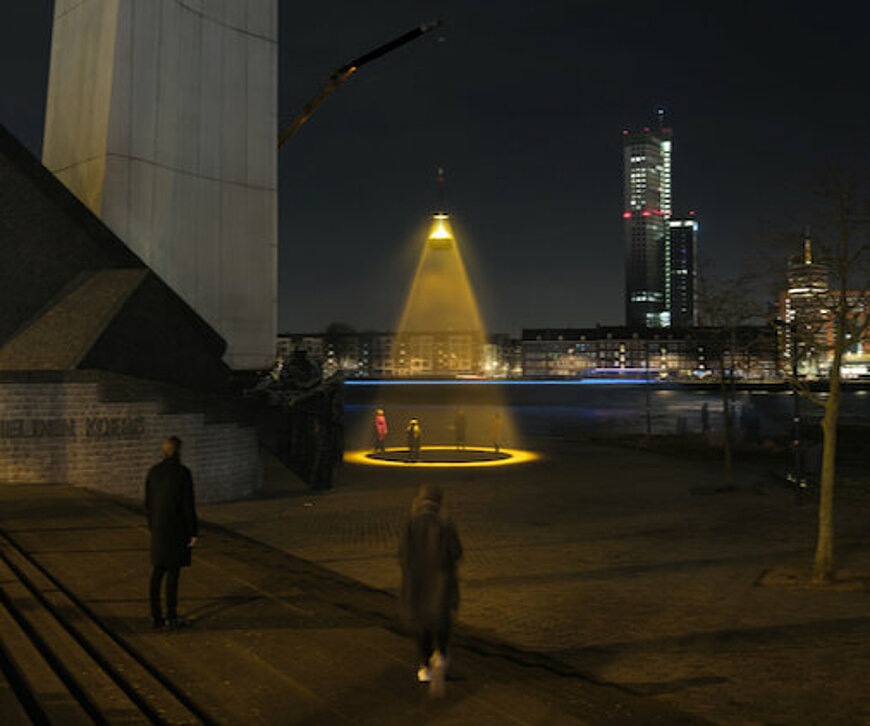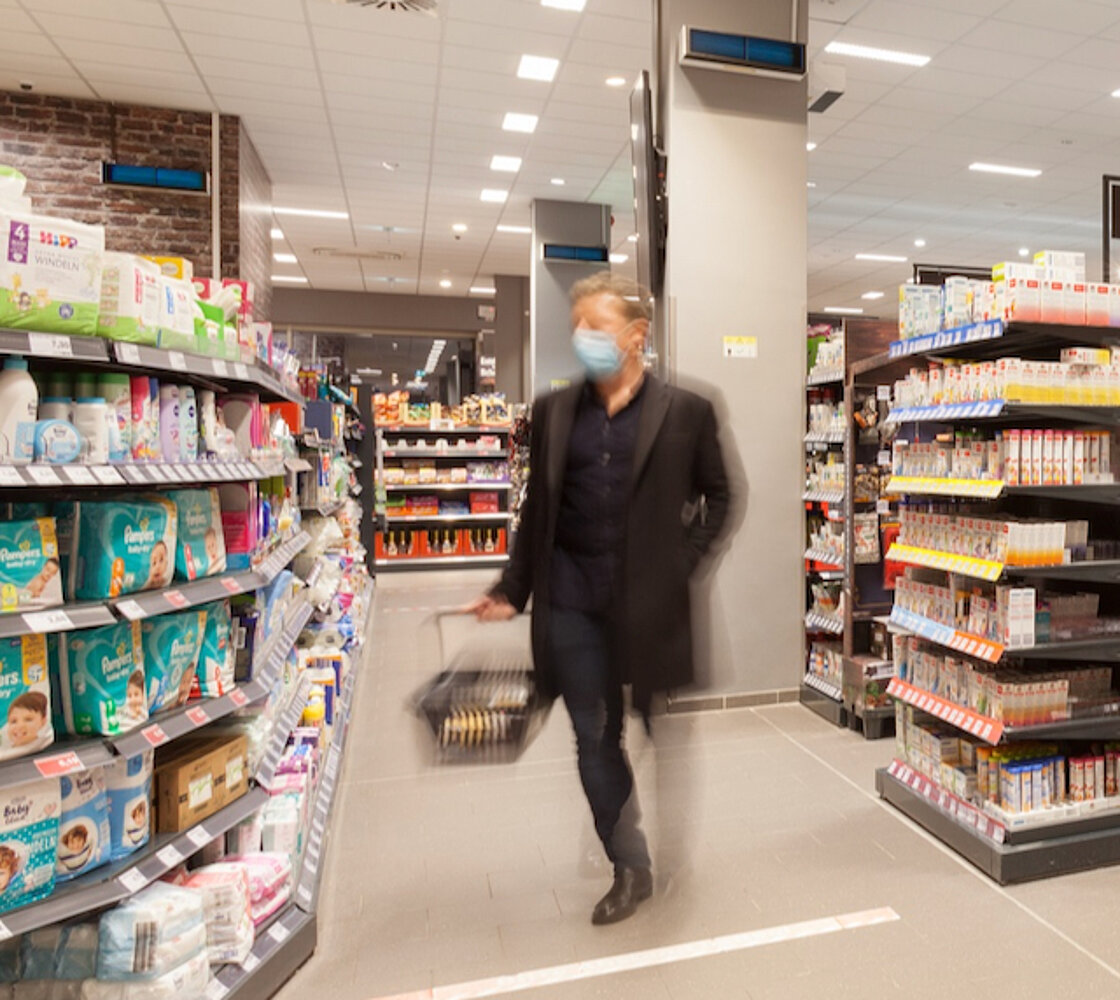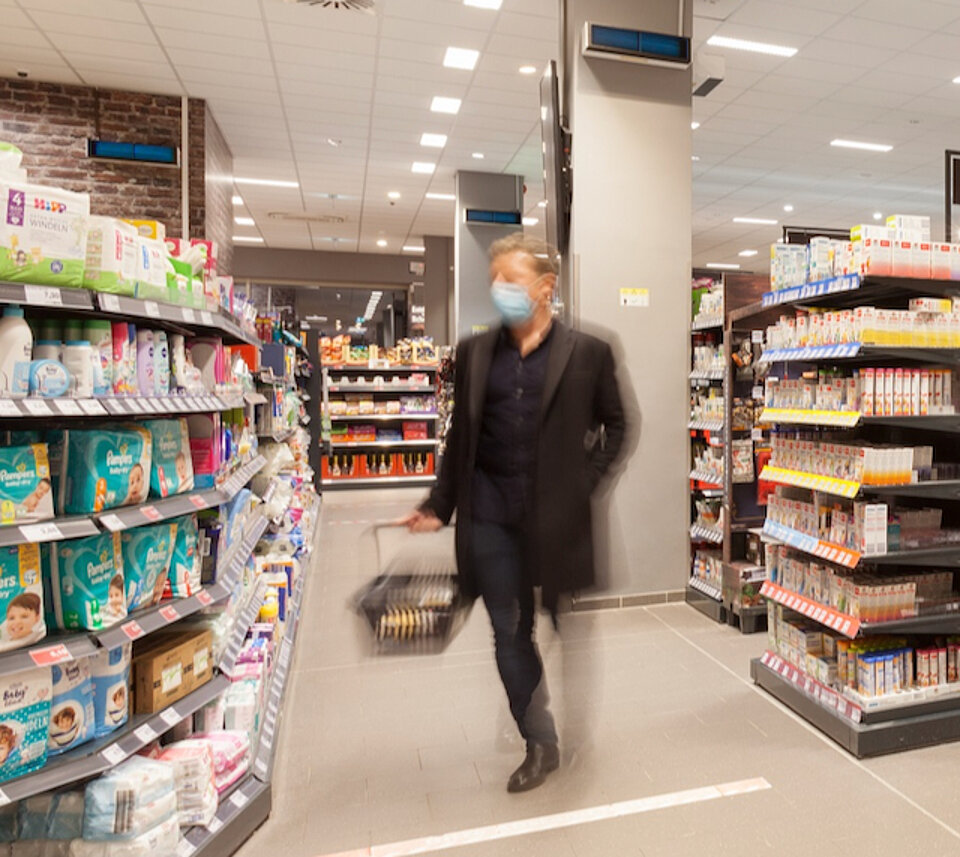Save encounters under the protective light of an artificial sun

UV-C breaks down the DNA or RNA of microorganisms such as bacteria and viruses, thereby rendering them harmless.
Suppose you want to talk to someone in the street for a while. That can be a dangerous activity in times of corona. Unless, of course, you stand under the protective light of the “Urban Sun,” whose rays cleans the air of practically all coronaviruses. There are now more solutions from technology companies that can make spaces corona-free.
Signify (formerly Philips Lighting) has built a purification system that can be installed in overhead air fixtures. Within 10 minutes, this system can inactivate 99.99 percent of SARS-COV-2 in the air in retail spaces, for example. This week, the German company ScreenSource GmbH announced that it had gotten positive results from a trial with their Airodoctor.
The basis of all these applications for purifying indoor air are UV-C light. Pathogens other than corona can also be combated with this. UV-C breaks down the DNA or RNA of microorganisms and in doing so renders them harmless.
Supermarkets
UV-C purification systems for overhead air can already be found in various locations in Europe. For instance, in a number of Edeka supermarkets in Germany, at stores from the DM drugstore chain in Slovakia and at the Harlequins Rugby Union Club in the United Kingdom. The system disinfects the air as it circulates through a room. It even works when people are present.


These and other purification systems could be a solution for sectors such as the hospitality industry, gyms and theatres. Because, according to researcher Bert Blocken of Eindhoven University of Technology (TU/e), a study he conducted showed that a combination of ventilation and innovative air purification can be a good precaution for safe and responsible sports, even during the coronapandemic. His research was published in the scientific journal Building and Environment.
lean air or air quality is closely related to the concentration of aerosol particles, the tiny droplets of saliva that remain suspended in the air. Research by the TU/e and others has now shown that ventilation alone is usually not enough. In order to keep the concentration of aerosol particles constantly low in, for example, indoor sports facilities, additional air cleaning is required.
Cleaning using plasma technology with activated carbon and electrostatic filters proves very effective. Together with the ventilation system, they remove 80 to 90 percent of the aerosols from the air. According to him, follow-up research will have to show whether this combination of air cleaning and ventilation also shows the same results with other technologies and in other environments, such as nursing homes, schools, indoor (sports) stadiums, offices, restaurants, theatres, lifts, etc.
‘Symbol of hope’
Artist and designer Daan Roosegaarde came up with a very different approach when it came to creating a corona-safe environment with the help of far-UVC with 222nm . He and his team of designers developed the ‘Urban Sun‘. “As a symbol of hope, a large circle of this UV-C light shines down on public spaces, which rids those spaces of the coronavirus. It acts as an extra level of protection in addition to the current government regulations. URBAN SUN wants to offer hope,” Studio Roosegaarde stated in a press release.
“It tackles the negative effects of social isolation by improving the safety of cultural and sporting events, public squares and schoolyards.”
The first launch of Urban Sun took place on Tuesday next to the Erasmus Bridge, Rotterdam’s most iconic landmark. The project is debuting as a film premiere on StudioRoosegaarde.net with the possibility for more exhibitions in future.
Ventilation
One of the conditions for allowing schools to reopen in the Netherlands is that there should be proper ventilation in place. In practice, that often means keeping windows and doors wide open. If you then combine that measure with a purification system based on UV-C light, the risk of infection can actually be reduced by up to 73 percent.
This has been shown by a practical scientific trial in South Korea with the German Airodoctor air purification system. In a classroom with 25 students, window ventilation reduced the risk of infection by 55 percent. When using the AiroDoctor with closed windows, the risk dropped by over 50 percent. The device performed best when placed in the center of the classroom.